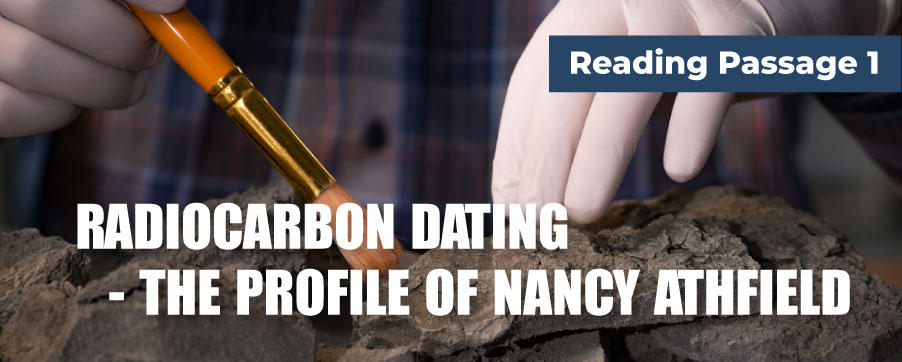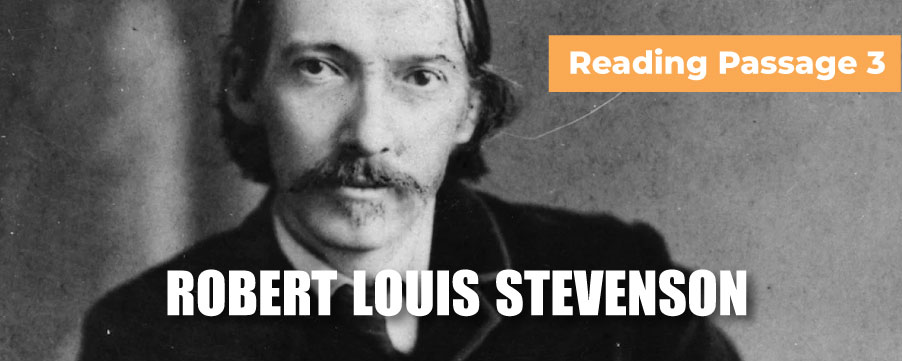
IELTS Recent Mock Tests Volume 5
- Đăng ngày: 24 Jan 2018
- Tests taken: 1,565,557
Đáp án
Part 1: Question 1 - 13
- 1 FALSE
- 2 NOT GIVEN
- 3 NOT GIVEN
- 4 FALSE
- 5 FALSE
- 6 NOT GIVEN
- 7 TRUE
- 8 university/college
- 9 rat
- 10 diet
- 11 archaeologist
- 12 funding
- 13 database
- 1 FALSE
- 2 NOT GIVEN
- 3 NOT GIVEN
- 4 FALSE
- 5 FALSE
- 6 NOT GIVEN
- 7 TRUE
- 8 university/college
- 9 rat
- 10 diet
- 11 archaeologist
- 12 funding
- 13 database
Part 2: Question 14 - 26
- 14 A
- 15 D
- 16 B
- 17 D
- 18 C
- 19 B
- 20 D
- 21 A
- 22 workplace injury
- 23 16.6 weeks,16,6 weeks
- 24 7%
- 25 golf
- 26 massage
- 14 A
- 15 D
- 16 B
- 17 D
- 18 C
- 19 B
- 20 D
- 21 A
- 22 workplace injury
- 23 16.6 weeks,16,6 weeks
- 24 7%
- 25 golf
- 26 massage
Part 3: Question 27 - 40
- 27 D
- 28 D
- 29 B
- 30 A
- 31 C
- 32 TRUE
- 33 NOT GIVEN
- 34 FALSE
- 35 FALSE
- 36 F
- 37 A
- 38 H
- 39 G
- 40 I
- 27 D
- 28 D
- 29 B
- 30 A
- 31 C
- 32 TRUE
- 33 NOT GIVEN
- 34 FALSE
- 35 FALSE
- 36 F
- 37 A
- 38 H
- 39 G
- 40 I
Giải thích chi tiết
Questions 1-7
Do the following statements agree with the information given in Reading Passage 1?
In boxes 1-7 on you answer sheet, write
| TRUE | if the statement agrees with the information |
| FALSE | if the statement contradicts the information |
| NOT GIVEN | If there is no information on this |
1 Nancy Athfield first discovered the ancient remains in Cambodia.
2 The remains found in the Cambodia was in good condition.
3 Nancy took some time off from her regular work to do research in Cambodia.
4 The Cambodia government asked Nancy to radiocarbon the remains.
5 The filmmakers aimed to find out how the Angkor was rebuilt.
6 Nancy initially doubted whether the royal family was hidden in Cambodia.
7 Nancy disproved the possibility that the remains belonged to the Angkor royal family.
- 1 Answer: FALSE
Keywords in Questions
Similar words in Passage
Q1: Nancy Athfield first discovered the ancient remains in Cambodia.
Many prehistoric remains were discovered by the local people of Cambodia.
Note:
It is stated clearly in the passage that Nancy only studied the remains, it was the local people, who discovered these objects, not Nancy. So the answer must be FALSE.
- 2 Answer: NOT GIVEN
Keywords in Questions
Q2: The remains found in Cambodia was in good condition.
Note:
The passage only describes the research Nancy carried out on the remains. The status of the remains was not mentioned. So, the answer must be NOT GIVEN.
- 3 Answer: NOT GIVEN
Keywords in Questions
Similar words in Passage
Q3: Nancy took some time off from her regular work to do research in Cambodia.
Athfield studied the ancient remains found in the country of
Cambodia.
Note
The passage doesn’t mention how much time/how often Nancy spent in Cambodia. So, the answers is NOT GIVEN
- 4 Answer: FALSE
Keywords in Questions
Similar words in Passage
Q4: The Cambodia government asked Nancy to radiocarbon the remains.
At that time, written records and historic accounts conflicted on the true resting place. Many people across the world disagreed over where the final resting place was. For the first time, Athfield and her team had a chance to use radiocarbon dating to find new evidence.
Note:
It was the conflicts/disagreements/mystery over where the final resting place that urged Nancy to use “radiocarbon dating”, not the government. So, the answer must be FALSE.
- 5 Answer: FALSE
Keywords in Questions
Similar words in Passage
Q5: The filmmakers aimed to find out how the Angkor was rebuilt.
Athfield had this unique opportunity because her team, comprised of scientists and filmmakers, were in Cambodia working on a documentary. The team was trying to discover evidence to prove a controversial claim in history: that Cambodia was the resting place for the famous royal family of Angkor.
Note:
As stated in the passage, they wanted to ascertain “a claim in history” about the resting place for the famous royal family of Angkor, not to discover how it was rebuilt. So the answer must be FALSE.
- 6 Answer: NOT GIVEN
Keywords in Questions
Similar words in Passage
Q6: Nancy initially doubted whether the royal family was hidden in Cambodia.
According to historic records, the remains of the Angkor royal family were much younger than that, so this evidence cast a lot of doubt as to the status of the ancient remains.
Note
In the passage, it is stated that the evidence Nancy found “cast doubt on” the status of the ancient remains, not whether the royal family was hidden in Cambodia. It also made no reference to Nancy’s doubt about anything. So, the answer must be NOT GIVEN.
- 7 Answer: TRUE
Keywords in Questions
Similar words in Passage
Q7: Nancy disproved the possibility that the remains
belonged to the Angkor royal family.
Nancy found the history of Angkor went back to as early as 1620. According to historic records, the remains of the Angkor royal family were much younger than that, so this evidence cast a lot of doubt as to the status of the ancient remains. The
lesearch ultimately raised more questions.
Note
As stated, there was a difference in the age of the Royal family and the Historic remains according to Nancy’s result. This showed that the idea that “the remains belonged to the Angkor royal family.” was impossible. So, the answer must be TRUE.
Questions 8-13
Complete the flow-chart below.
Choose ONE WORD ONLY from the passage for each answer. Write your answers in boxes 8-13 on your answer sheet.
During her mid-teens, Nancy wasn’t expected to attend 8 |
↓ |
Willard Billy later helped Nancy to find that she was interested in science. |
↓ |
Her PhD degree was researching when a kind of 9 , first went into New Zealand. |
↓ |
Her research showed that the subject’s 10 accounted for the fault in the earlier research. |
↓ |
She was a professional 11 before she went back to Cambodia in 2003. |
↓ |
When she returned Cambodia, the lack of 12 was a barrier for her research. |
↓ |
Then she compiled the 13 of the Cambodia radiocarbon dating of the ancients. |
↓ |
After that, the lack of a detailed map of the geology of Cambodia became a hindrance of her research. |
- 8 Answer: university/college
Keywords in Questions
Similar words in Passage
Q8. During her mid-teens, Nancy wasn’t expected to attend ______
In her early years, the career of Athfield was very unconventional. She didn’t start her career as a scientist. At the beginning, she would take any kind of job to pay her bills. Most of them were low-paying jobs or brief Community service
opportunities. She worked often but didn’t know what path she would ultimately take. But eventually, her friend suggested that Athfield invest in getting a degree. The friend recommended that Athfield attend a nearby university.
Note
“unconventional” (adj) is similar to “not traditional”
ultimately (adv) synonym: eventually, finally
According to the content of the passage, the missing word is UNIVERSITY.
- 9 Answer: rat
Keywords in Questions
Similar words in Passage
Q9. Her PhD degree was researching when a kind of ______, first went into New Zealand.
She earned her PhD in scientific research, and completed her
studies on a kind of rat when it first appeared in New Zealand.
Note
“PhD” means: a university degree of a very high level that is given to somebody who has done research in a particular subject
It is clearly stated that the focus of Nancy’s PhD research was on a kind of rat. RAT is the missing word.
- 10 Answer: diet
Keywords in Questions
Similar words in Passage
Q10. Her research showed that the subject’s ________ accounted for the fault in the earlier research.
Her research showed that the subject’s diet led to the fault in the earlier research.
Note
According to the content of the passage, the missing word is DIET.
- 11 Answer: archaeologist
Keywords in Questions
Similar words in Passage
Q11. She was a professional ________ before she went back to Cambodia in 2003.
Athfield eventually joined the field of Anthropology, the study of
human societies, and became a well-qualified archaeologist. It was during her blossoming career as an archaeologist that Athfield became involved with the famous Cambodia project.
Note
According to the content of the passage, the missing word is ARCHAEOLOGIST.
- 12 Answer: funding
Keywords in Questions
Similar words in Passage
Q12. When she returned Cambodia, the lack of ______ was a barrier for her research.
Her research was often delayed by lack of funding, and government paperwork.
Note
According to the content of the passage, the missing word is FUNDING.
- 13 Answer: database
Keywords in Questions
Similar words in Passage
Q13 Then she compiled the ______ of the Cambodia radiocarbon dating of the ancients.
Using radiocarbon dating, Athfield completed a database for the materials found in Cambodia
Note
According to the content of the passage, the missing word is DATABASE.
READING PASSAGE 1
You should spend about 20 minutes on Questions 1-13, which are based on Reading Passage 1 below.

Radiocarbon Dating - The Profile of Nancy Athfield
Have you ever picked up a small stone off the ground and wondered how old it was? Chances are, that stone has been around many more years than your own lifetime. Many scientists share this curiosity about the age of inanimate objects like rocks, fossils and precious stones. Knowing how old an object is can provide valuable information about our prehistoric past. In most societies, human beings have kept track of history through writing. However, scientists are still curious about the world before writing, or even the world before humans. Studying the age of objects is our best way to piece together histories of our pre-historic past. One such method of finding the age of an object is called radiocarbon dating. This method can find the age of any object based on the kind of particles and atoms that are found inside of the object. Depending on what elements the object is composed of, radiocarbon can be a reliable way to find an object’s age. One famous specialist in this method is the researcher Nancy Athfield. Athfield studied the ancient remains found in the country of Cambodia. Many prehistoric remains were discovered by the local people of Cambodia. These objects were thought to belong to some of the original groups of humans that first came to the country of Cambodia. The remains had never been scientifically studied, so Nancy was greatly intrigued by the opportunity to use modern methods to discover the true age of these ancient objects.
Athfield had this unique opportunity because her team, comprised of scientists and filmmakers, were in Cambodia working on a documentary. The team was trying to discover evidence to prove a controversial claim in history: that Cambodia was the resting place for the famous royal family of Angkor. At that time, written records and historic accounts conflicted on the true resting place. Many people across the world disagreed over where the final resting place was. For the first time, Athfield and her team had a chance to use radiocarbon dating to find new evidence. They had a chance to solve the historic mystery that many had been arguing over for years.
Athfield and her team conducted radiocarbon dating of many of the ancient objects found in the historic site of Angkor Wat. Nancy found the history of Angkor went back to as early as 1620. According to historic records, the remains of the Angkor royal family were much younger than that, so this evidence cast a lot of doubt as to the status of the ancient remains. The lesearch ultimately raised more questions. If the remains were not of the royal family, then whose remains were being kept in the ancient site? Athfield’s team left Cambodia with more questions unanswered. Since Athfield’s team studied the remains, new remains have been unearthed at the ancient site of Angkor Wat, so it is possible that these new remains could be the true remains of the royal family. Nancy wished to come back to continue her research one day.
In her early years, the career of Athfield was very unconventional. She didn’t start her career as a scientist. At the beginning, she would take any kind of job to pay her bills. Most of them were low-paying jobs or brief Community service opportunities. She worked often but didn’t know what path she would ultimately take. But eventually, her friend suggested that Athfield invest in getting a degree. The friend recommended that Athfield attend a nearby university. Though doubtful of her own qualifications, she applied and was eventually accepted by the school. It was there that she met Willard Libby, the inventor of radiocarbon dating. She took his class and soon had the opportunity to complete hands-on research. She soon realised that science was her passion. After graduation, she quickly found a job in a research institution.
After college, Athfield’s career in science blossomed. She eventually married, and her husband landed a job at the prestigious organisation GNN. Athfield joined her husband in the same organisation, and she became a lab manager in the institution. She earned her PhD in scientific research, and completed her studies on a kind of rat when it first appeared in New Zealand. There, she created original research and found many flaws in the methods being used in New Zealand laboratories. Her research showed that the subject’s diet led to the fault in the earlier research. She was seen as an expert by her peers in New Zealand, and her opinion and expertise were widely respected. She had come a long way from her old days of working odd jobs. It seemed that Athfield’s career was finally taking off.
But Athfield’s interest in scientific laboratories wasn’t her only interest. She didn’t settle down in New Zealand. Instead, she expanded her areas of expertise. Athfield eventually joined the field of Anthropology, the study of human societies, and became a well-qualified archaeologist. It was during her blossoming career as an archaeologist that Athfield became involved with the famous Cambodia project. Even as the filmmakers ran out of funding and left Cambodia, Athfield continued to stay and continue her research.
In 2003, the film was finished in uncertain conclusions, but Nancy continued her research on the ancient ruins of Angkor Wat. This research was not always easy. Her research was often delayed by lack of funding, and government paperwork. Despite her struggles, she committed to finishing her research. Finally, she made a breakthrough. Using radiocarbon dating, Athfield completed a database for the materials found in Cambodia. As a newcomer to Cambodia, she lacked a complete knowledge of Cambodian geology, which made this feat even more difficult. Through steady determination and ingenuity, Athfield finally completed the database. Though many did not believe she could finish, her research now remains an influential and tremendous contribution to geological sciences in Cambodia. In the future, radiocarbon dating continues to be a valuable research skill. Athfield will be remembered as one of the first to bring this scientific method to the study of the ancient ruins of Angkor Wat.









